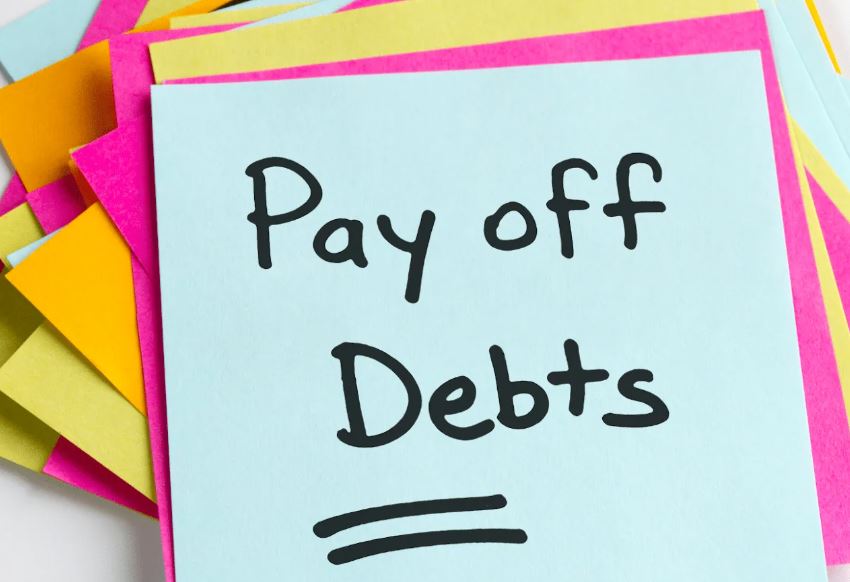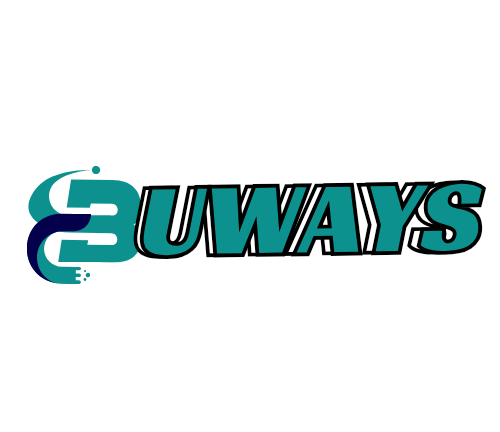Are you tired of feeling overwhelmed by debt while watching your financial dreams slip through your fingers? You’re not alone. Many people find themselves trapped in a cycle of payments and interest that seems impossible to break. But here’s the good news: paying off debt and building wealth is not only achievable—it’s a journey that can lead to financial freedom and security. This step-by-step guide will equip you with actionable strategies to tackle your debt effectively while laying the groundwork for a prosperous future. From budgeting techniques to smart saving habits, each step you take will bring you closer to financial stability. Ready to reclaim your financial power? Let’s embark on this transformative journey together and turn your aspirations into reality.
Understanding the Importance of Debt Management
Managing debt is a critical component of financial health. Without a clear strategy, debt can quickly spiral out of control, leading to stress and financial instability. Understanding the importance of debt management is the first step towards reclaiming your financial freedom. Effective debt management not only helps you stay on top of your payments but also improves your credit score and reduces the amount of interest you pay over time. By prioritizing your debts and creating a structured plan, you can make significant strides towards financial stability.
Debt can be a significant barrier to achieving your financial goals. Whether it’s buying a home, starting a business, or saving for retirement, unmanaged debt can hinder your progress. It’s essential to recognize that debt management is not just about paying off what you owe—it’s about creating a sustainable financial plan that allows you to meet your obligations while also saving for the future. This holistic approach ensures that you are not only getting out of debt but also building a solid foundation for long-term wealth.
One of the key benefits of effective debt management is the reduction of financial stress. When you have a clear plan and a realistic timeline for paying off your debt, you gain a sense of control over your finances. This control can significantly reduce anxiety and improve your overall quality of life. Moreover, by managing your debt effectively, you can avoid the pitfalls of high-interest rates and late fees, which can add up quickly and make it even harder to get out of debt. Ultimately, understanding the importance of debt management is the first step towards achieving financial freedom and building wealth.
Assessing Your Current Financial Situation
Before you can start paying off debt and building wealth, it’s crucial to have a clear understanding of your current financial situation. This involves taking a detailed look at your income, expenses, debts, and assets. Begin by listing all your sources of income, including your salary, side hustles, and any other earnings. Next, track your monthly expenses, such as rent or mortgage payments, utilities, groceries, transportation, and discretionary spending. This will give you a comprehensive view of your cash flow and help you identify areas where you can cut back.
Once you have a clear picture of your income and expenses, it’s time to assess your debts. Make a list of all your outstanding debts, including credit cards, student loans, car loans, and any other liabilities. For each debt, note the outstanding balance, interest rate, minimum monthly payment, and due date. This information will be crucial when creating your debt repayment plan. Additionally, take stock of your assets, such as savings accounts, investments, and property. Understanding your net worth—the difference between your assets and liabilities—will give you a better sense of your overall financial health.
After gathering all this information, analyze your financial situation to identify any patterns or trends. Are you consistently spending more than you earn? Are there any debts with particularly high interest rates that are costing you a lot in interest payments? Identifying these issues will help you develop a targeted strategy for paying off your debt and building wealth. Remember, the key to successful debt management and wealth building is having a clear and accurate understanding of where you stand financially. This will serve as the foundation for all your future financial decisions.
Creating a Comprehensive Debt Repayment Plan
Once you have a clear understanding of your financial situation, the next step is to create a comprehensive debt repayment plan. This plan will serve as your roadmap to becoming debt-free and will help you stay focused and motivated throughout the process. Start by prioritizing your debts. One effective method is the debt avalanche approach, where you focus on paying off debts with the highest interest rates first. This strategy can save you money in interest payments over time and help you pay off your debts faster.
Another popular method is the debt snowball approach, where you prioritize paying off the smallest debts first. This strategy can provide a psychological boost by giving you quick wins and a sense of accomplishment as you eliminate smaller debts. Whichever method you choose, the key is to commit to a plan and stick with it. Make sure to allocate any extra funds, such as bonuses or tax refunds, towards your debt repayment to accelerate the process.
In addition to prioritizing your debts, it’s important to create a realistic budget that allows you to make consistent payments towards your debts while covering your essential expenses. Cut back on non-essential spending and redirect those funds towards your debt repayment. Consider finding ways to increase your income, such as taking on a side job or selling unused items, to boost your debt repayment efforts. Remember, the goal is to create a plan that is sustainable and allows you to make steady progress towards becoming debt-free.
Strategies for Paying Off Different Types of Debt
Different types of debt require different strategies for effective repayment. Credit card debt, for example, often comes with high interest rates, making it a priority to pay off as quickly as possible. One effective strategy is to transfer your balances to a credit card with a lower interest rate or a 0% introductory rate. This can significantly reduce the amount of interest you pay and help you pay off your debt faster. Make sure to read the fine print and understand any fees associated with balance transfers before making a decision.
Student loan debt, on the other hand, may have more flexible repayment options. Explore income-driven repayment plans, which adjust your monthly payments based on your income and family size. These plans can make your payments more manageable and prevent you from falling behind. Additionally, consider refinancing your student loans to secure a lower interest rate, which can save you money over the life of the loan. Be sure to weigh the pros and cons of refinancing, as it may not be the best option for everyone.
For car loans and mortgages, consider making extra payments towards the principal balance. Even small additional payments can significantly reduce the amount of interest you pay over time and help you pay off the loan faster. Another strategy is to refinance your car loan or mortgage to secure a lower interest rate. This can lower your monthly payments and free up funds to allocate towards other debts. Remember, the key to paying off different types of debt is to understand the specific terms and conditions of each loan and develop a tailored strategy that works for your unique financial situation.
Building an Emergency Fund: Why It Matters
An essential component of financial stability is having an emergency fund. This fund acts as a financial safety net, providing you with a cushion in case of unexpected expenses, such as medical bills, car repairs, or job loss. Building an emergency fund should be a priority even as you work on paying off your debt. Without an emergency fund, you may find yourself relying on credit cards or loans to cover unexpected costs, which can quickly derail your debt repayment efforts.
Financial experts recommend saving three to six months’ worth of living expenses in your emergency fund. Start by setting a realistic savings goal and creating a plan to reach it. Open a separate savings account specifically for your emergency fund to avoid the temptation of spending the money on non-emergencies. Automate your savings by setting up regular transfers from your checking account to your emergency fund. Even small, consistent contributions can add up over time and help you reach your savings goal.
Having an emergency fund provides peace of mind and financial security. It allows you to handle unexpected expenses without going into debt and gives you the confidence to focus on your long-term financial goals. Remember, building an emergency fund is an ongoing process. Once you reach your initial savings goal, continue to add to your fund to account for changes in your expenses and financial situation. By prioritizing your emergency fund, you’ll be better prepared to handle life’s uncertainties and stay on track with your debt repayment and wealth-building efforts.
Shifting Your Mindset: From Debt to Wealth
Achieving financial freedom involves more than just practical strategies; it requires a shift in mindset. Transitioning from a debt-focused mentality to a wealth-building mindset is crucial for long-term success. Start by viewing debt repayment as an investment in your future rather than a burden. Each payment you make brings you one step closer to financial freedom and allows you to redirect those funds towards building wealth once your debts are paid off.
Cultivate a positive attitude towards money and develop healthy financial habits. This includes living within your means, making informed financial decisions, and prioritizing your financial goals. Embrace a growth mindset, which involves continually learning about personal finance and seeking ways to improve your financial situation. Surround yourself with positive influences, such as financial mentors, supportive friends, and educational resources, to stay motivated and focused on your goals.
Visualize your financial future and set clear, achievable goals. Whether it’s buying a home, starting a business, or retiring comfortably, having a clear vision of what you want to achieve will keep you motivated and on track. Celebrate your progress along the way, no matter how small. Recognizing your achievements reinforces positive behavior and builds momentum towards your ultimate goal of financial freedom and wealth. Remember, shifting your mindset is a powerful tool that can transform your financial journey and help you achieve lasting success.
Investing Basics: Growing Your Wealth
Once you have a handle on your debt and have built an emergency fund, it’s time to focus on growing your wealth through investing. Investing is a powerful way to build long-term financial security and achieve your financial goals. Start by educating yourself on the basics of investing, such as the different types of investment options, risk and return, and the importance of diversification. Understanding these fundamental concepts will help you make informed decisions and develop a solid investment strategy.
One of the first steps in investing is to determine your risk tolerance. This is the level of risk you are comfortable taking with your investments. Your risk tolerance will depend on factors such as your financial goals, time horizon, and personal preferences. Generally, younger investors can afford to take on more risk, as they have more time to recover from market fluctuations. On the other hand, older investors may prefer a more conservative approach to preserve their wealth. Assess your risk tolerance honestly and use it to guide your investment choices.
Diversification is a key principle of successful investing. This involves spreading your investments across different asset classes, such as stocks, bonds, and real estate, to reduce risk and increase the potential for returns. Diversification helps protect your portfolio from significant losses if one investment performs poorly. Consider using a mix of individual stocks, mutual funds, and exchange-traded funds (ETFs) to achieve diversification. Additionally, regularly review and rebalance your portfolio to ensure it aligns with your financial goals and risk tolerance. By following these investing basics, you can grow your wealth and build a secure financial future.
Budgeting Techniques for Long-Term Financial Health
Creating and maintaining a budget is essential for long-term financial health. A budget helps you manage your money effectively, track your spending, and ensure that you are living within your means. Start by setting clear financial goals, such as paying off debt, saving for a down payment on a house, or building an emergency fund. Your budget should reflect these goals and help you prioritize your spending accordingly.
One effective budgeting technique is the 50/30/20 rule. This rule suggests allocating 50% of your income to essential expenses, such as housing, utilities, and groceries, 30% to discretionary spending, such as entertainment and dining out, and 20% to savings and debt repayment. This simple framework can help you create a balanced budget and ensure that you are making progress towards your financial goals. Adjust the percentages as needed to fit your unique financial situation and priorities.
Another helpful technique is zero-based budgeting, where you allocate every dollar of your income to a specific expense or savings goal. This approach ensures that you are intentional with your spending and helps you avoid unnecessary expenses. Start by listing all your income sources and expenses, then assign each dollar a job until you reach a zero balance. Regularly review and adjust your budget to account for changes in your income and expenses. By following these budgeting techniques, you can achieve long-term financial health and stay on track with your debt repayment and wealth-building efforts.
Resources and Tools for Debt Repayment and Wealth Building
Utilizing resources and tools can greatly enhance your debt repayment and wealth-building efforts. There are numerous apps and online platforms designed to help you manage your finances, track your spending, and stay on top of your debt repayment. Budgeting apps, such as Mint, YNAB (You Need a Budget), and PocketGuard, can help you create and maintain a budget, set financial goals, and monitor your progress. These tools can provide valuable insights into your spending habits and help you identify areas where you can cut back and save more.
For debt repayment, consider using debt payoff calculators and tracking tools. These tools can help you create a personalized debt repayment plan, calculate how long it will take to pay off your debts, and track your progress. Websites like Undebt.it and ReadyForZero offer useful tools and resources to help you stay organized and motivated. Additionally, consider working with a financial advisor or credit counselor for personalized guidance and support. These professionals can help you develop a comprehensive debt repayment and wealth-building strategy tailored to your unique financial situation.
When it comes to investing, there are numerous resources available to help you get started and make informed decisions. Online brokerages, such as Vanguard, Fidelity, and Charles Schwab, offer a wide range of investment options and educational resources. Robo-advisors, such as Betterment and Wealthfront, provide automated investment management services based on your risk tolerance and financial goals. Additionally, consider reading books, taking online courses, and attending workshops to deepen your understanding of personal finance and investing. By leveraging these resources and tools, you can enhance your financial knowledge and achieve your debt repayment and wealth-building goals.
Conclusion: Your Path to Financial Freedom
Achieving financial freedom is a journey that requires dedication, discipline, and a clear plan. By following the steps outlined in this guide, you can effectively manage your debt, build an emergency fund, and grow your wealth through smart investing and budgeting techniques. Remember, the key to success is consistency and perseverance. Stay committed to your financial goals, and celebrate your progress along the way.
As you work towards paying off your debt and building wealth, don’t be afraid to seek support and guidance from financial professionals and trusted resources. Surround yourself with positive influences and continue to educate yourself on personal finance and investing. Cultivate a growth mindset and embrace the journey towards financial freedom with confidence and determination.
Ultimately, the path to financial freedom is within your reach. By taking control of your finances and making informed decisions, you can achieve lasting financial security and peace of mind. Stay focused, stay motivated, and remember that every step you take brings you closer to a prosperous and financially stable future. Your journey to financial freedom starts today—embrace it and make it your reality.





